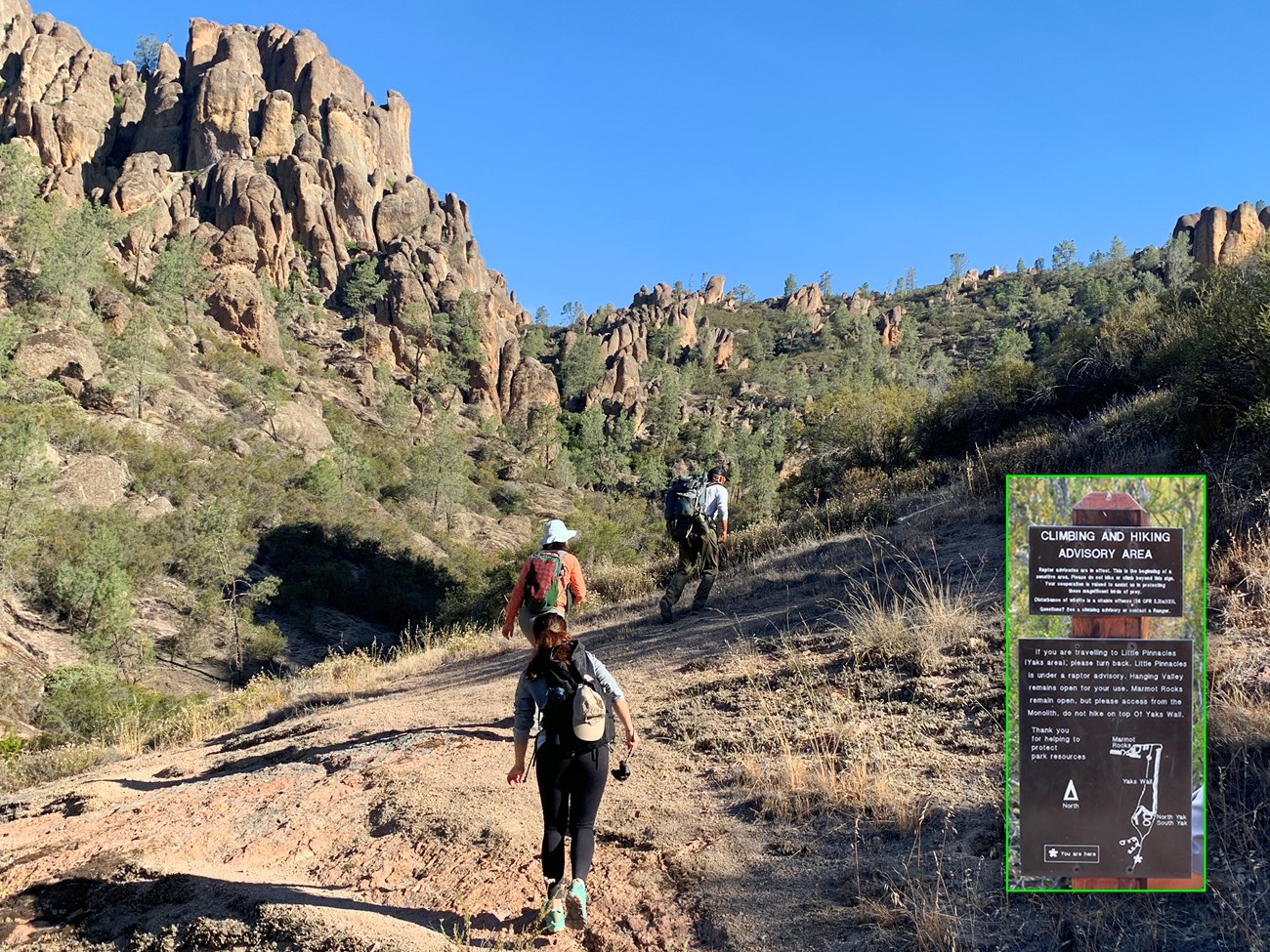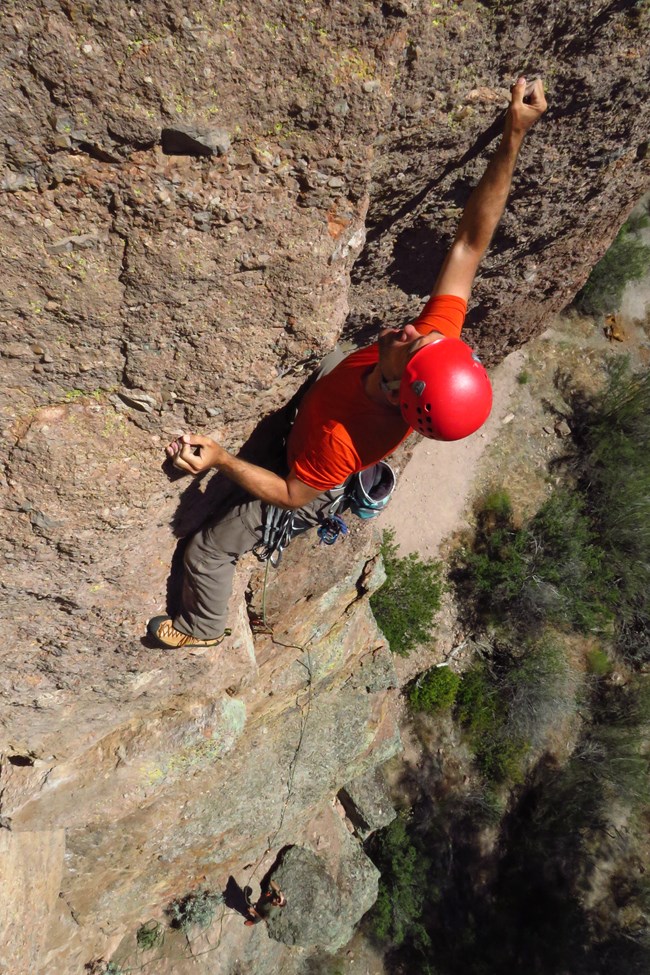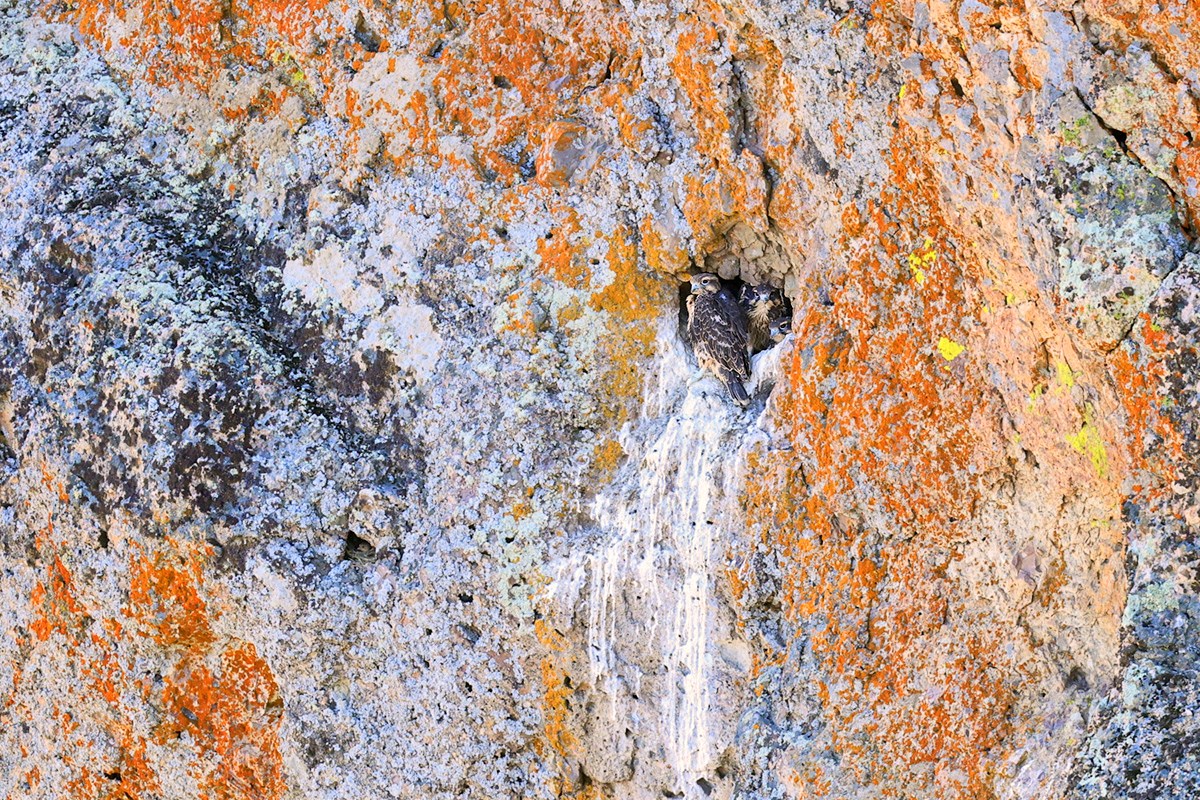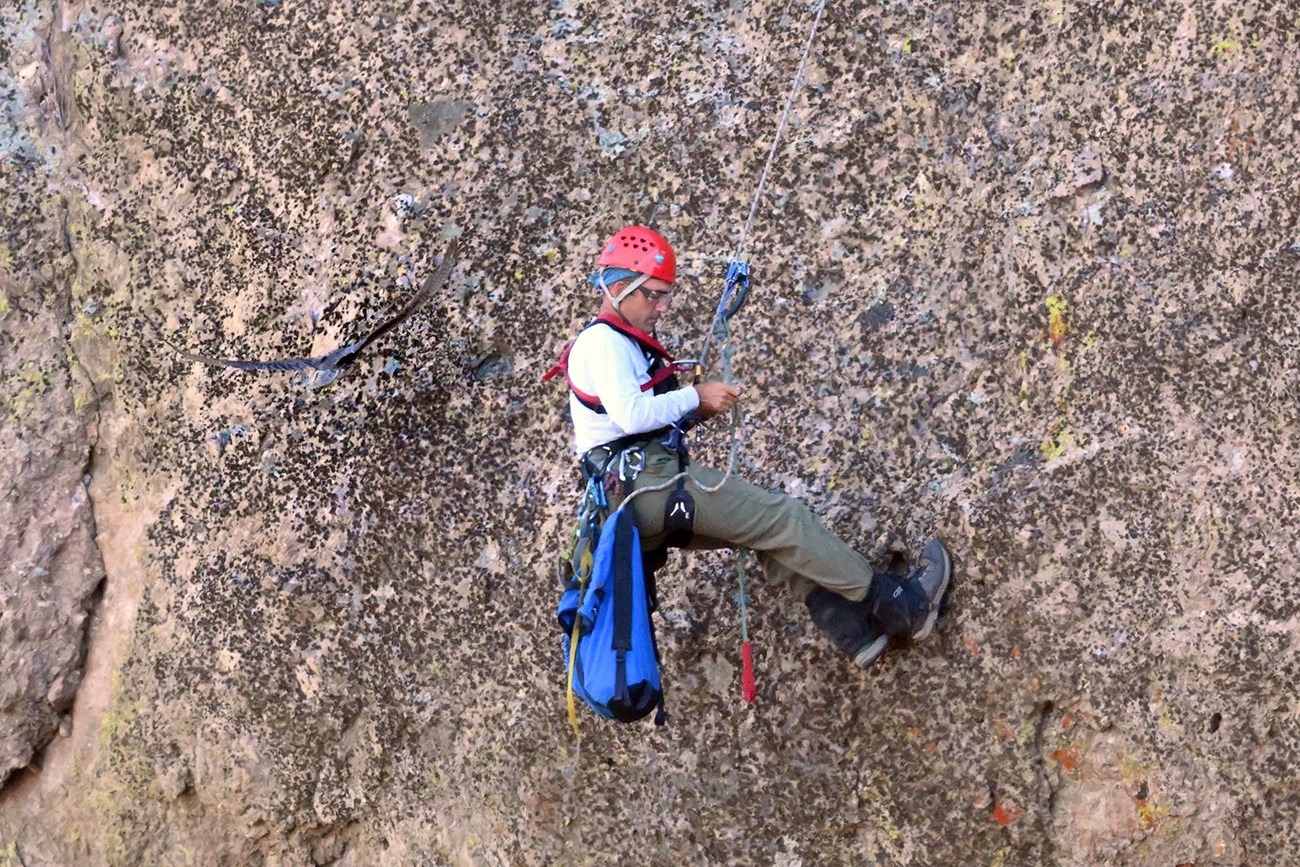Last updated: June 13, 2023
Article
How Climbing Community Connections Strengthen Falcon Conservation at Pinnacles National Park

NPS / Environment for the Americas / Jailyn Hoskins
June 2022 - After a day of falcon monitoring, Wildlife Biologist Gavin Emmons led me and two other interns on a hike to see a red-tailed hawk nest, spot condors and visit the High Peaks at Pinnacles National Park. We also had a side mission of removing a climbing advisory sign.

Courtesy Gavin Emmons
Climbing, as in rock climbing, is a popular sport that involves scaling rock walls, indoors and/or outside. I myself have done some indoor climbing but quickly realized that I had a fear of heights when relying on my body strength to keep me on the wall. Pinnacles National Park is a popular spot for those who enjoy outdoor rock climbing. Both locals and travelers come to climb some of the unique rock formations the park has to offer.
But Pinnacles’ rock formations are also popular with the park’s prairie and peregrine falcons. These birds rely on cliff cavities to nest and raise their young. Any activity in their nesting area causes stress on the falcons. Hence the falcon monitoring program that Gavin leads for the San Francisco Bay Area Inventory & Monitoring Network. The program helps the park learn where the birds are nesting each year and informs the climbing advisory signs that tell climbers which parts of the park are off limits.
Throughout each monitoring season Gavin uses a spotting scope to observe and become familiar with the territories of each falcon pair, their nest locations, and the number of young. When falcons nest near established climbing routes, Gavin will determine which routes need to be closed or have an advisory sign posted to warn climbers of falcon activity. As a biologist he understands how important it is for the birds to not be disturbed.
At the same time, Gavin is also a climber who doesn’t want to close more routes than necessary. He’s been climbing since before he started working in the park almost 20 years ago. This combined knowledge of climbing routes and nest locations allows him to make informed decisions about closures and advisories. Gavin also has a longstanding relationship with the local climbing community who are very knowledgeable about the raptor program closures. On the official park website and on local climbing forums (including Mud “n Crud), Gavin will post falcon closure updates and advisories. In turn, the climbing community will sometimes alert Gavin about falcon nests.

NPS / Gavin Emmons
Gavin’s climbing experience also allows him to scale different rock formations for monitoring purposes, a task that can be quite difficult. Gavin humbly explains that he uses his climbing skills to access nests for gathering blood samples and banding fledglings.

Courtesy Gavin Emmons
Talking with Gavin reminded me of the importance of building community relationships for conservation. The special connection that he has with the local climbing community, as not only a member but also as a wildlife biologist, is effective. Climbers are happy to observe the advisories knowing that their community has been thought about in the process. Gavin remarked, “it’s nice to have this spirit of resource stewardship that climbers bring to the park”.
For more information
- Pinnacles Raptor Advisories and Raptors webpages
- Mud 'n Crud climbing advisories forum
- San Francisco Bay Area Network Falcon Monitoring webpage
- Pacific Coast Science & Learning Center Prairie & Peregrine Falcons webpage
- Contact Wildlife Biologist Gavin Emmons
See more from the Bay Area Nature & Science Blog
